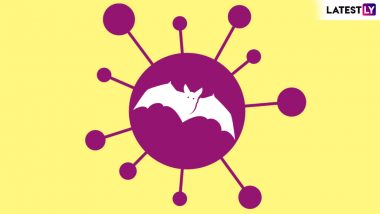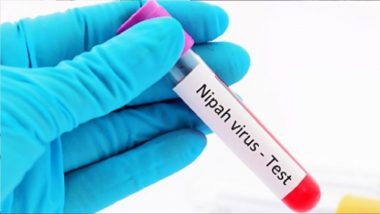A year after the deadly Nipah virus scare gripped Kerala, a high alert has been sounded in the state after a 23-year-old patient was admitted into an isolation ward in Ernakulam. The Hindu reports that the patient has shown symptoms similar to that of Nipah virus infection and the samples have been sent to National Institute of Virology in Pune. Although the situation is tense in Kerala, the health authorities have said that there’s no need to panic. Health Minister KK Shailaja said that the Kalamassery Medical College Hospital in Kochi has taken the necessary precautions by setting up isolation wards in case of an untoward situation. The deadly bat-borne Nipah virus has claimed 17 lives in Kerala in 2018. Here’s what you should know about the Nipah virus infection, including its causes, symptoms, treatment and preventive measures. Fact or Hoax: Will Eating Chicken or Fruits Cause Nipah Virus Infection?
What is Nipah Virus?
NiV was first identified during an outbreak of disease that took place in Malaysia in 1998 and pigs were the immediate hosts. In 2004 in Bangladesh, humans became infected with NiV because of consuming date palm sap that had been contaminated by infected fruit bats. Below we discuss what causes Nipah virus, the symptoms and how can one prevent it.
Nipah virus infection gets its name from the village in Malaysia where the person from whom the virus was first isolated succumbed to the disease. The organism which Nipah virus encephalitis is an RNA or ribonucleic acid virus of the family paramyxoviridae genus Henipavirus and is closely related to Hendra virus. It first appeared in domestic pigs and has been found among several species of domestic animals including dogs, cats, goats, horses and sheep. The natural host of the virus is fruit bats of Pteropodidae family, Pteropus genus. The infection is also known to affect human beings.
The Causes of Nipah Virus Infection
Transmission of Nipah virus to humans may occur after direct contact with infected bats, infected pigs or from other NiV infected people. The virus is thought to be maintained in nature by ‘flying foxes’, type of a fruit bat, which shows no signs of infection. People become infected through contact or oral ingestion of objects of materials contaminated by the urine, faeces or saliva from infected flying foxes. In Malaysia and Singapore, humans were apparently infected with the virus only through close contact with infected pigs. Person-to-person transmission in Bangladesh and India is regularly reported. This is most commonly seen in the family and caregivers of NiV infected patients.
Symptoms of Nipah Virus Infection
Humans infected with the virus can vary from no symptoms of illness to death. Typically, the human infection presents as an encephalitic syndrome marked by fever, headache and muscle pain. This may be followed by neurological signs such as disorientation, dizziness, mental confusion, coma and potentially death. During the 1998 epidemic outbreak in Malaysia, 40-50 percent of the human cases resulted in death. Nipah virus in Bangladesh has been transmitted from person-to-person following very close contact with infected individuals. It is thought that the outbreak initially started when children ate fruit contaminated by the saliva and urine of fruit bats.
Diagnosis
According to the Centers for Disease Control and Prevention (CDC), the laboratory diagnosis of a patient with a clinical history of NiV can be made by using a combination of tests. Virus isolation attempts from the throat and nasal swabs, cerebrospinal fluid, urine and blood should be performed in the early stages of the disease. In fatal cases, immunohistochemistry on tissues collected during autopsy may be the only way to confirm a diagnosis.
Treatment for Nipah Virus Infection
There is no specific treatment for the Nipah virus and the primary treatment for human cases is limited to intensive supportive care. There is no vaccine for either humans or animals. The scientists at the University of Tokyo, Japan are currently working towards finding a vaccine for the Nipah virus infection, and have received a $31 million deal for it. If they are successful at developing the vaccine, the near-fatal disease can be prevented.
Prevention
For people, the best prevention measures include avoiding contact with animals which could be infected with Nipah. Avoid eating fruits that may have been contaminated with saliva or urine from fruit bats. Additional efforts focused on surveillance and awareness will help prevent future outbreaks.
According to CDC, research is needed to better understand the ecology of bats and Nipah virus, investigating questions such as the seasonality of disease with reproductive cycles of bats. Raising awareness of transmission and symptoms is important in reinforcing standard infection control practices to avoid human-to-human infections in hospital settings.
(The above story first appeared on LatestLY on Jun 03, 2018 03:57 PM IST. For more news and updates on politics, world, sports, entertainment and lifestyle, log on to our website latestly.com).













 Quickly
Quickly



















